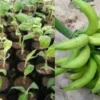- このトピックは空です。
- 投稿者投稿
- 3月 22, 2025 6:17 am #600205

The global agricultural landscape faces the pressing challenge of feeding a growing population while minimizing environmental impact. Traditional intensive farming practices, reliant on synthetic inputs and monoculture, often degrade soil health and contribute to ecological imbalances.
Sustainable cropping systems offer a promising pathway towards achieving long-term food security and environmental sustainability.
This article explores the integration of agroecological principles and appropriate technologies to create sustainable cropping systems that enhance soil health and boost productivity.
1. Agroecological Principles for Sustainable Cropping
Agroecology provides a framework for designing cropping systems that mimic natural ecosystems.
Key principles include enhancing biodiversity, promoting nutrient cycling, conserving soil health, and minimizing external inputs. Implementing these principles involves practices such as crop diversification, cover cropping, agroforestry, and integrated pest management.
Crop diversification, as discussed previously, creates a more resilient ecosystem, reducing pest and disease pressure. Cover crops protect the soil from erosion, improve soil structure, and add organic matter.
Agroforestry integrates trees with crops, enhancing biodiversity and providing multiple ecosystem services. Integrated pest management (IPM) minimizes the use of synthetic pesticides by relying on natural pest control methods.
2. Technology for Precision and Efficiency
While agroecology focuses on ecological principles, technology plays a crucial role in enhancing efficiency and precision in sustainable cropping systems. Precision agriculture tools, such as GPS-guided tractors, remote sensing, and soil sensors, enable farmers to apply inputs precisely where and when they are needed, minimizing waste and environmental impact.
Drones and satellite imagery can monitor crop health, identify pest and disease outbreaks, and assess soil conditions. Information and communication technologies (ICTs) can connect farmers with real-time data, market information, and extension services. These technologies can help farmers make informed decisions and optimize their management practices.
3. Enhancing Soil Health Through Integrated Management
Soil health is the foundation of sustainable cropping systems. Integrating various management practices can significantly improve soil fertility and structure. No-till farming, which minimizes soil disturbance, preserves soil organic matter and reduces erosion.
Cover cropping and the use of compost and biofertilizers enhance soil microbial activity and nutrient cycling. Crop rotations that include legumes can fix atmospheric nitrogen, reducing the need for synthetic nitrogen fertilizers. Implementing these practices in a holistic manner can restore degraded soils and enhance their long-term productivity.
4. Water Management and Conservation
Water scarcity is a major challenge for agriculture, particularly in arid and semi-arid regions. Sustainable cropping systems prioritize water conservation and efficient water management.
Practices such as drip irrigation, rainwater harvesting, and mulching can minimize water loss and improve water use efficiency. Selecting drought-tolerant crops and implementing water-saving irrigation techniques are essential for ensuring sustainable water use. Integrating agroforestry systems can also improve water infiltration and reduce runoff.
5. Socio-Economic Considerations and Farmer Empowerment
The successful implementation of sustainable cropping systems requires addressing socio-economic considerations and empowering farmers. Access to knowledge, resources, and markets is crucial for enabling farmers to adopt sustainable practices.
Farmer training and extension services can provide farmers with the necessary skills and information. Fair market access and pricing policies can incentivize farmers to adopt sustainable practices. Participatory approaches that involve farmers in decision-making processes can enhance ownership and ensure that the systems are tailored to their specific needs and contexts.
Sustainable cropping systems, integrating agroecological principles and appropriate technologies, offer a comprehensive approach to achieving long-term soil health and productivity.
By enhancing biodiversity, promoting nutrient cycling, conserving soil health, and optimizing water management, farmers can create resilient and productive agricultural systems. Addressing socio-economic considerations and empowering farmers are essential for ensuring the widespread adoption of sustainable cropping practices.
Read Also: The Role of Continuous Cropping in Agriculture
- 投稿者投稿
- このトピックに返信するにはログインが必要です。






